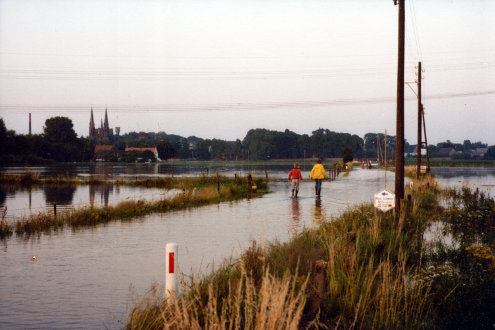
In the future, due to climate change and corresponding extremely high water levels, rivers in the Netherlands will be more likely to break their banks. This was the conclusion reached by Dutch researcher Suleyman Naqshband […]. River dunes in the major rivers of the Netherlands tend to persist and not flatten out, thereby increasing the risk of flooding.
River dunes in this case is the somewhat unfortunate name for sand structures at the bottom of the river. Apparently they are quite common in Dutch rivers. The university adds:
These river dunes can reach large sizes, growing to as much as one third of the total water depth. This restricts the flow of water, causing water levels in the area of river dunes to be much higher than in sections of the river in which they are absent. River dunes are also dynamic, growing rapidly in just a few days then flattening out or even disappearing completely at extremely high flow rates.
(Photo of the river Meuse overflowing in 1980: Martin Collin)
